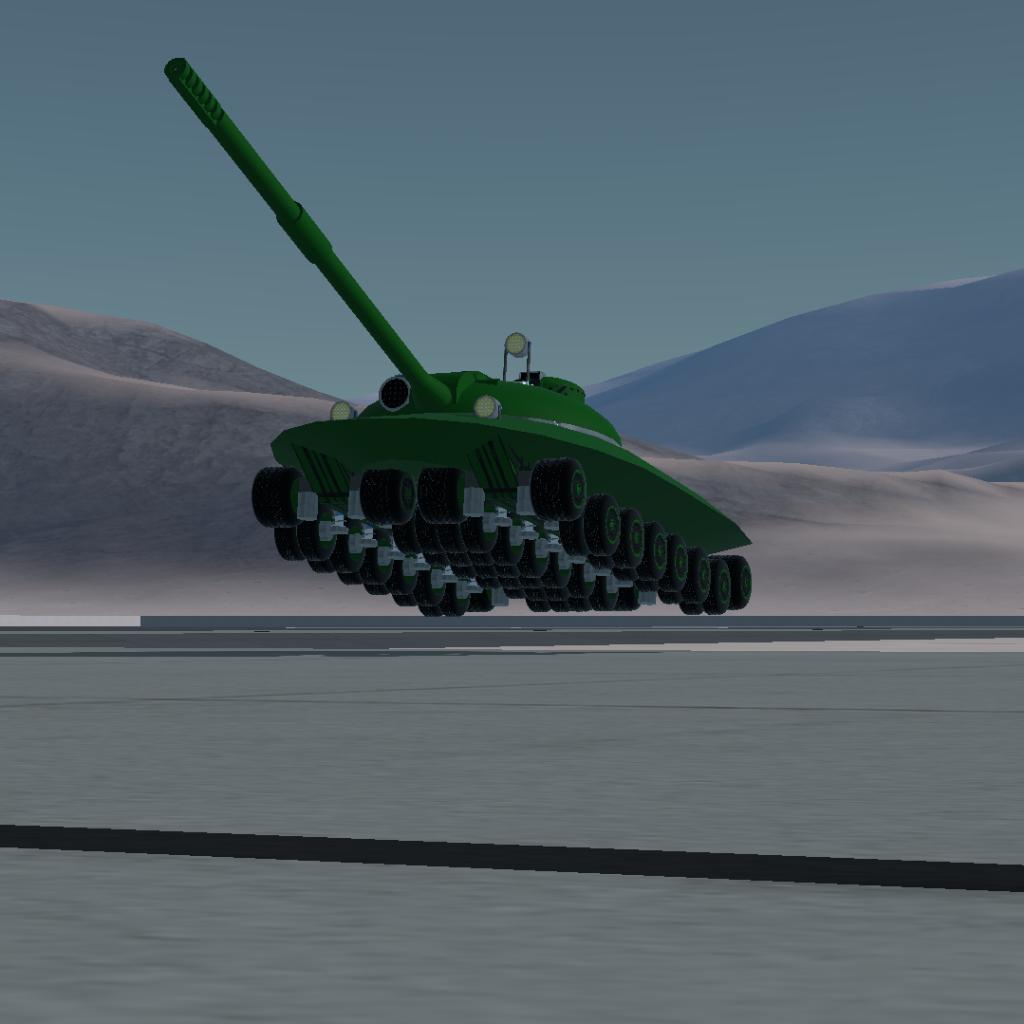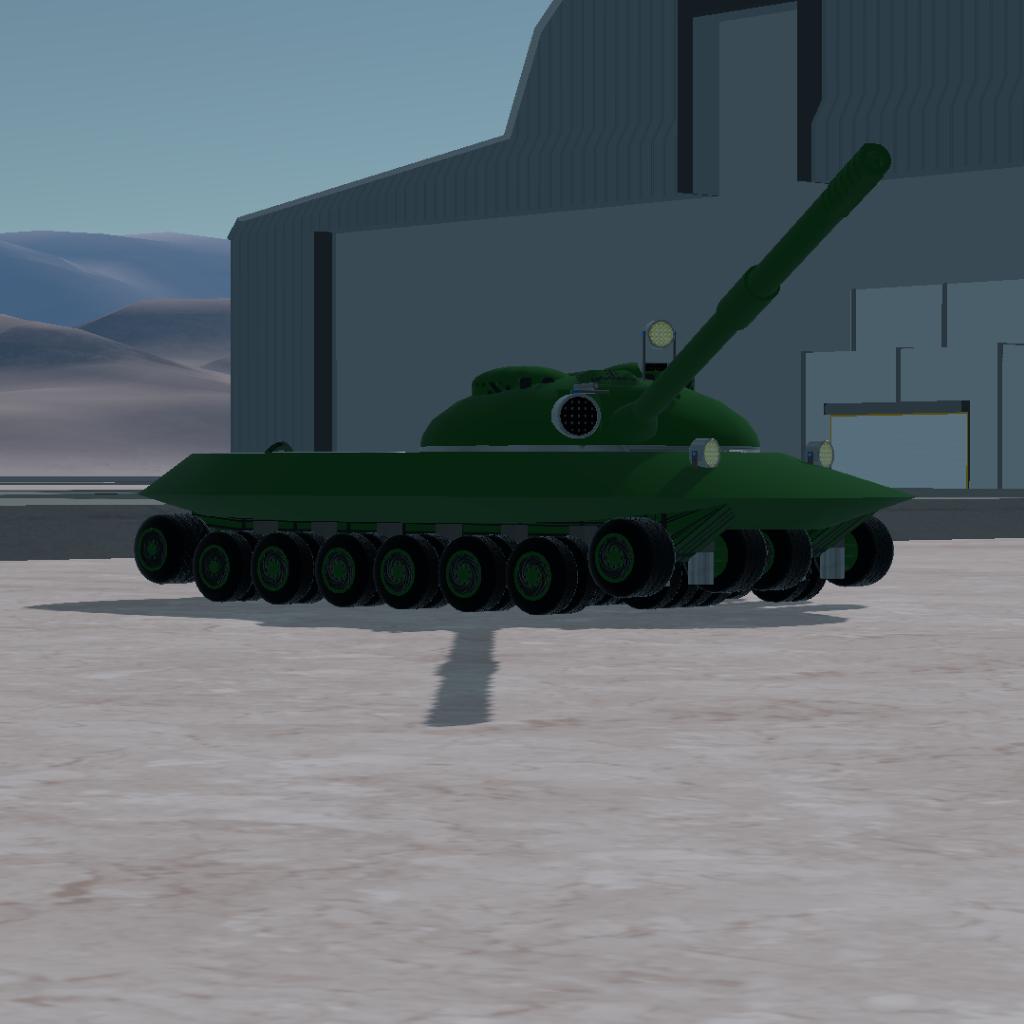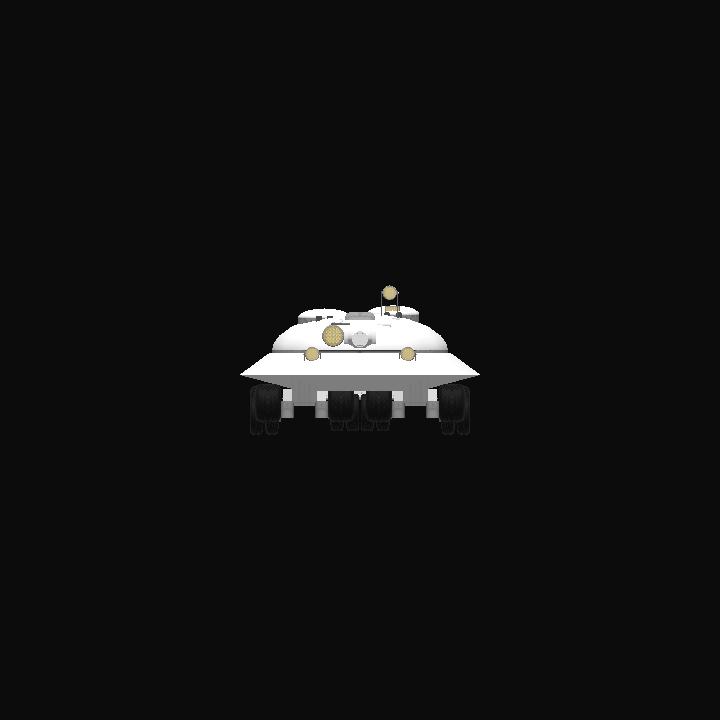Special thanks
MovingT34 Help me Make a suspension
Operate
Slider1 The turret rotates
Slider2 Artillery pitch
AG1 Engine
AG2 Lamphistorical background
The Cold War and the threat of nuclear war
In the early 1950s, as relations between the United States and the Soviet Union grew increasingly tense and nuclear war loomed, Soviet leaderita Khrushchev made it clear that the Soviet Union was preparing for a major nuclear conflict. In 1953, the Soviet military conducted a series of nuclear tests, and in September 1954, it carried out a special nuclear test in the Dokuchaevsk region with the participation of infantry, which revealed that the tanks near the nuclear blast center were flipped over by the shock wave, making the Soviet Union realize that the existing tanks could not meet the requirements of nuclear warfare.
Soviet heavy tank development needs
After World War II, Soviet heavy tanks such as the IS-2 and IS-3 gradually could not meet the requirements of the new era. The IS-, after modernization, still could not meet the requirements of the time, and the IS-3 was not favored by the tank troops because of its low reliability and comparable armor protection the T-54. The Soviet Union needed a new type of heavy tank to completely replace the old type.
New tank development plan
In 1956, the Soviet Ministry of Defense prepared to develop a new generation of heavy tanks for the period of 1956-960, demanding that the new tank weigh about 56-60 tons and have a basic protection of 130 mm. This new plan was given to theeningrad Kirov and Chelyabinsk plants to compete and select the optimal scheme. A group led by the genius scientist L. S. Toropyanov began develop the "Experimental vehicle structure 279 for tactical nuclear explosion area", which was also regarded as a sample to compete with the "277 project" for the generation of heavy tanks.
The unique design of Project 279
Tolochinov maximized the track contact area and considered a hull shape that could protect the crew from a storm. The 279 project used tracks, with a ground pressure “not exceeding 0.6 kg per square centimeter,” far less than the M1 Abrams’ 1.06 kg. hull was oval, and the interior was designed with layers of radiation-blocking material to counteract a nuclear blast. A model of the 279 was created in 1957.
Project termination
In 1960, Khrushchev canceled all heavy tank projects over 37 tons, and the 279 project was ordered to development.
Performance data
Basic parameters
Combat weight: 60 tons
Crew: 4 people
Length: 6.77 meters (body length), 10.38 meters (gun forward)
Width: 3.4 meters
Height: 2.475 meters
Weapon system
Main weapon: 1 M-65 type 130 mm rifled tank gun with 24 or 40 rounds of ammunition
Secondary: 1 14.5 mm KPVT coaxial machine gun with 300 rounds of ammunition
Armor protection
Front upper armor: thickness 192 mm, slope 60 degrees
Side of the hull: thickness 182 mm, slope 45
Turret front: thickness 305 mm, slope 30 degrees
Average thickness of the hull: 269 mm
Power system
Engine: 12-cylinder diesel engine of 1000 horsepower (2DG-8M type)
Maximum speed: 50 km/, some sources say 55 km/h
Maximum range: 300 km
Other features
Caterpillar Design: Four caterpillars are used, and the ground pressure is no more than 0.6 kg per square centimeter. Thepillar design increases the ground contact area, lowers the center of gravity, and improves the ability to resist shock waves.
Suspension System: The oil-gas suspension is adopted which can make the tank lie on the ground like a crab during a nuclear explosion to prevent it from being flipped by the shock wave.
Three-Protection System: It is with a perfect nuclear, chemical, and biological protection system.
Other Equipment: It is equipped with special equipment such as a fording system, an automatic fire extinguishing system and a combat room heating system.
GENERAL INFO
- Predecessor: 279
- Created On: Android
- Game Version: 1.3.204.1
- Price: $2,148k
- Number of Parts: 225
- Dimensions: 2 m x 4 m x 11 m
PERFORMANCE
- Total Delta V: 0m/s
- Total Thrust: 0N
- Engines: 0
- Wet Mass: 19,367kg
- Dry Mass: 16,344kg
STAGES
| Stage | Engines | Delta V | Thrust | Burn | Mass |
|---|
4 Comments
- Log in to leave a comment
-
120 BruhingRN3 days ago
@QuantumTechnology i know that thing, i mean im not that skilled enought and its hard for me
-
-







@BruhingRN 所以用多了就会了